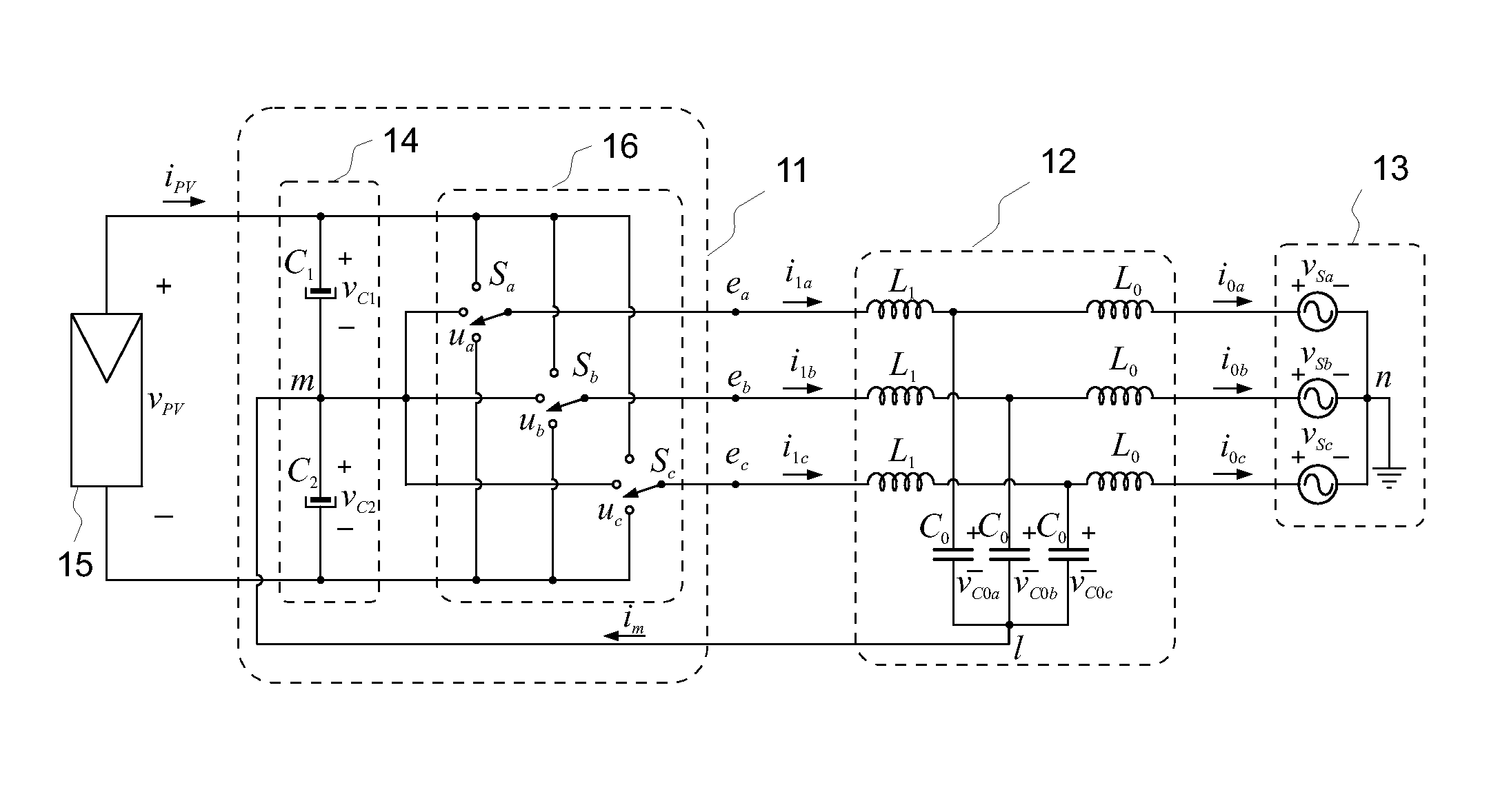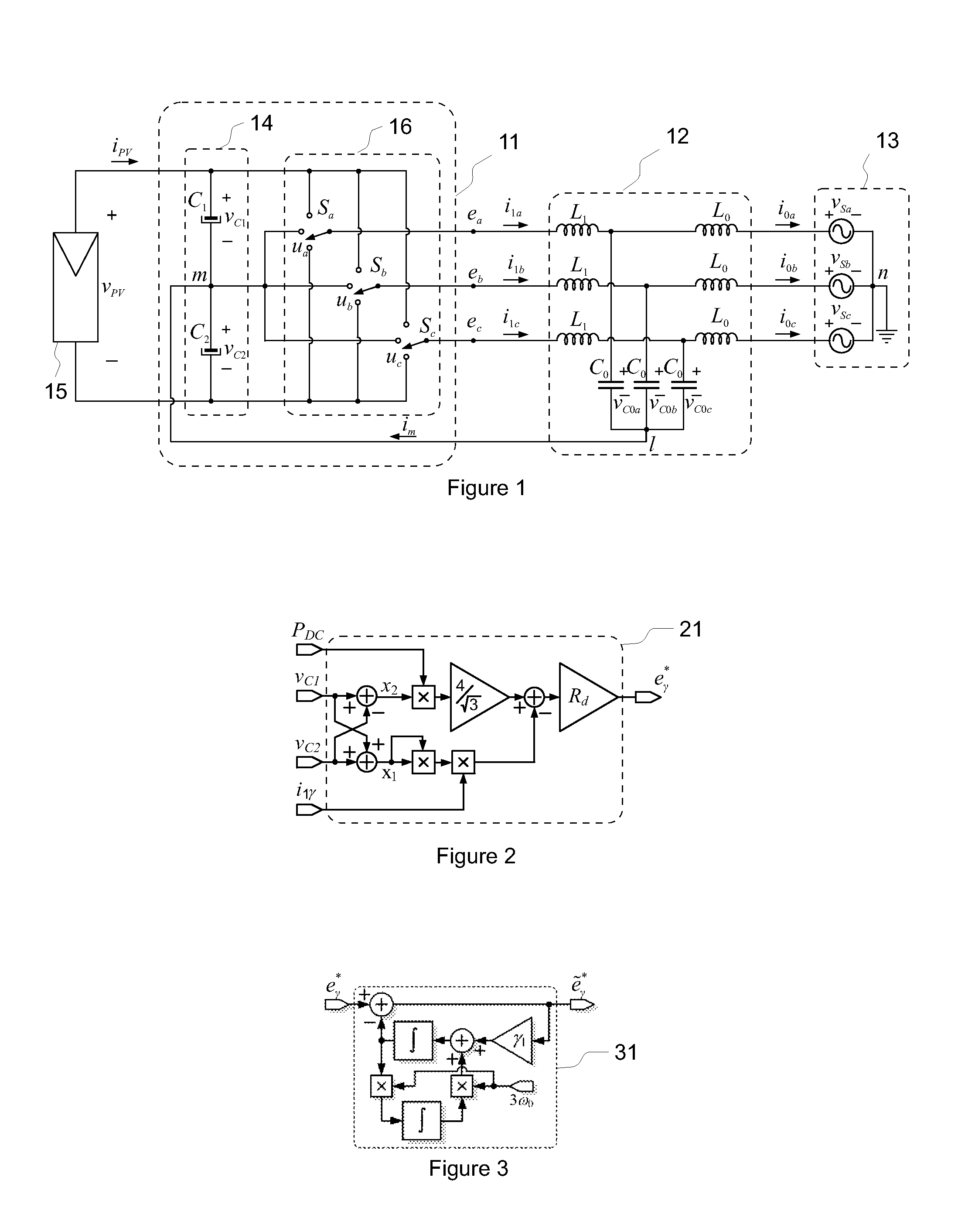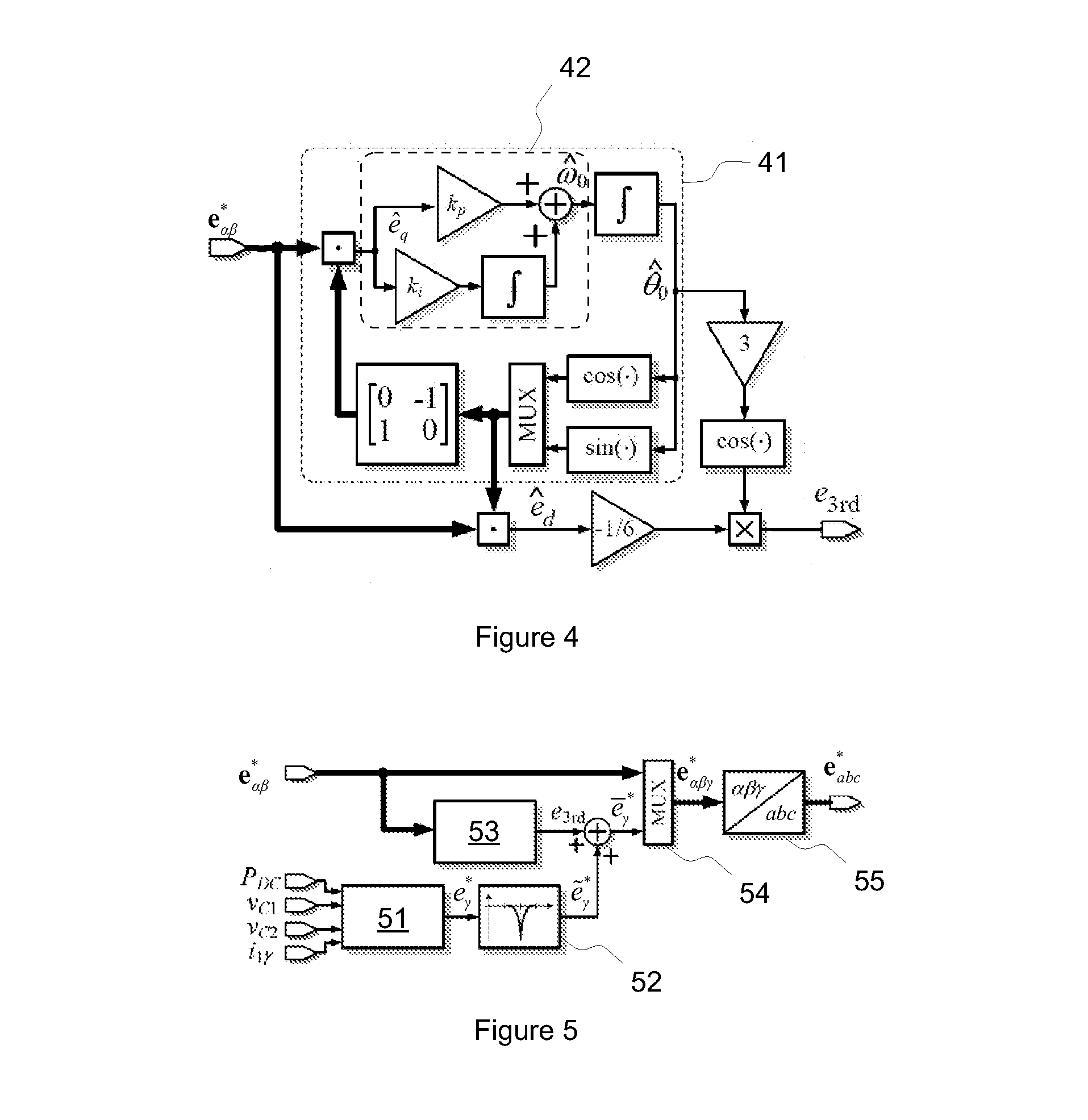Method and apparatus for zero-sequence damping and voltage balancing
a zero-sequence damping and voltage balancing technology, applied in the field of multi-level inverters, can solve problems such as severe adverse effects, capacitor voltage imbalance, and capacitor voltage balancing issu
- Summary
- Abstract
- Description
- Claims
- Application Information
AI Technical Summary
Benefits of technology
Problems solved by technology
Method used
Image
Examples
Embodiment Construction
[0026]Exemplary embodiments of the present disclosure provide a method and an apparatus so as to alleviate the above disadvantages.
[0027]This result can be achieved through a multi-phase inverter connected to the grid through an LCL-filter. The inverter topology includes an artificial mains neutral star point connection, which is referred in this disclosure as a virtual-ground (VG) connection. The VG represents a good option for the minimization of the CMV. In order to form the VG, a star point formed by the capacitors of the LCL-filter is connected to a mid-point of the DC-link.
[0028]The use of a virtual-ground allows also maximum utilization of the DC-link voltage. The DC-link voltage can be lowered by using a third-harmonic reference injection method. Thus, semiconductor devices in the inverter bridge of the inverter can be exposed to lower voltages, which, in turn, can reduce losses.
[0029]Since the capacitors in the DC-link are split, and the DC-link has a VG connection, a volta...
PUM
 Login to View More
Login to View More Abstract
Description
Claims
Application Information
 Login to View More
Login to View More - R&D
- Intellectual Property
- Life Sciences
- Materials
- Tech Scout
- Unparalleled Data Quality
- Higher Quality Content
- 60% Fewer Hallucinations
Browse by: Latest US Patents, China's latest patents, Technical Efficacy Thesaurus, Application Domain, Technology Topic, Popular Technical Reports.
© 2025 PatSnap. All rights reserved.Legal|Privacy policy|Modern Slavery Act Transparency Statement|Sitemap|About US| Contact US: help@patsnap.com



